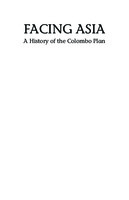Facing Asia: A History of the Colombo Plan
Abstract
‘No nation can escape its geography’, warned Percy Spender, Australia’s Minister for External Affairs, in 1950. With the immediate turmoil of World War II over, communism and decolonisation had ended any possibility that Asia could continue to be ignored by Australia. In the early 1950s, Australia embarked on its most ambitious attempt to engage with Asia: the Colombo Plan. This book examines the public and private agendas behind Australia’s foreign aid diplomacy and reveals the strategic, political and cultural aims that drove the Colombo Plan. It examines the legacy of WWII, how foreign aid was seen as crucial to achieving regional security, how the plan was sold to Australian and Asian audiences, and the changing nature of Australia’s relationship with Britain and the United States. Above all this is the question of how Australia sought to project itself into the region, and how Asia was introduced into the Australian consciousness. In answering these questions, this book tells the story of how an insular society, deeply scarred by the turbulence of war, chose to face its regional future.
Keywords
social aspects; history; southeast asia; economic assistence; political aspects; Australia; Colombo Plan; Drug Enforcement Administration; Japan; Race and ethnicity in the United States CensusDOI
10.26530/OAPEN_459231OCN
670399803Publisher
ANU PressPublisher website
https://press.anu.edu.au/Publication date and place
Canberra, 2010Classification
History
Anthropology


 Download
Download Web Shop
Web Shop